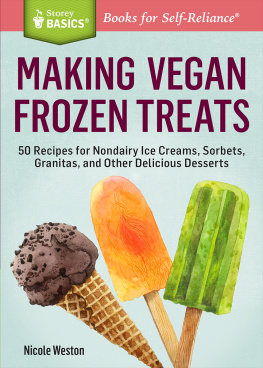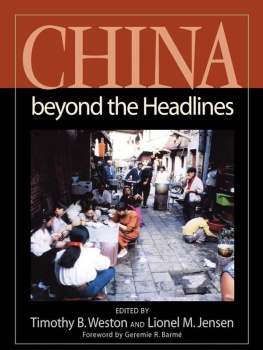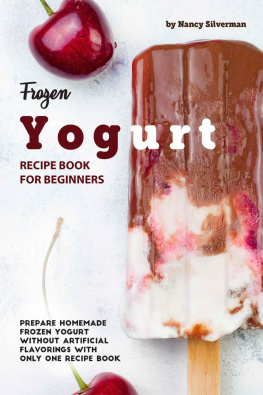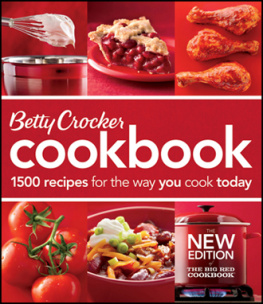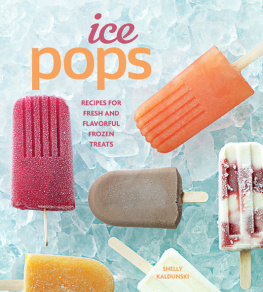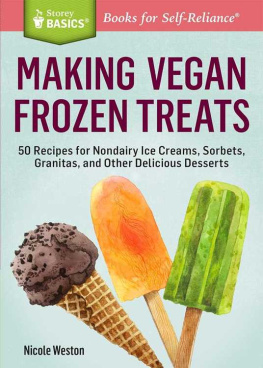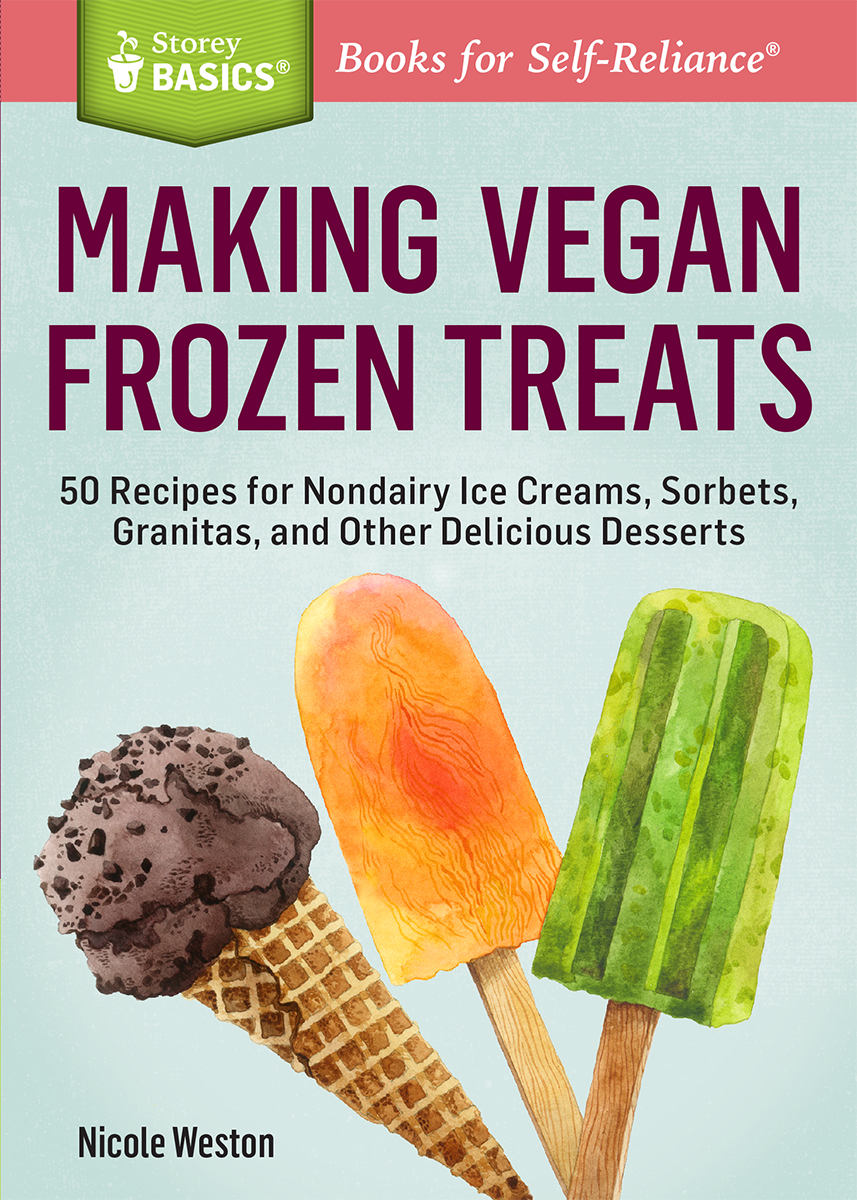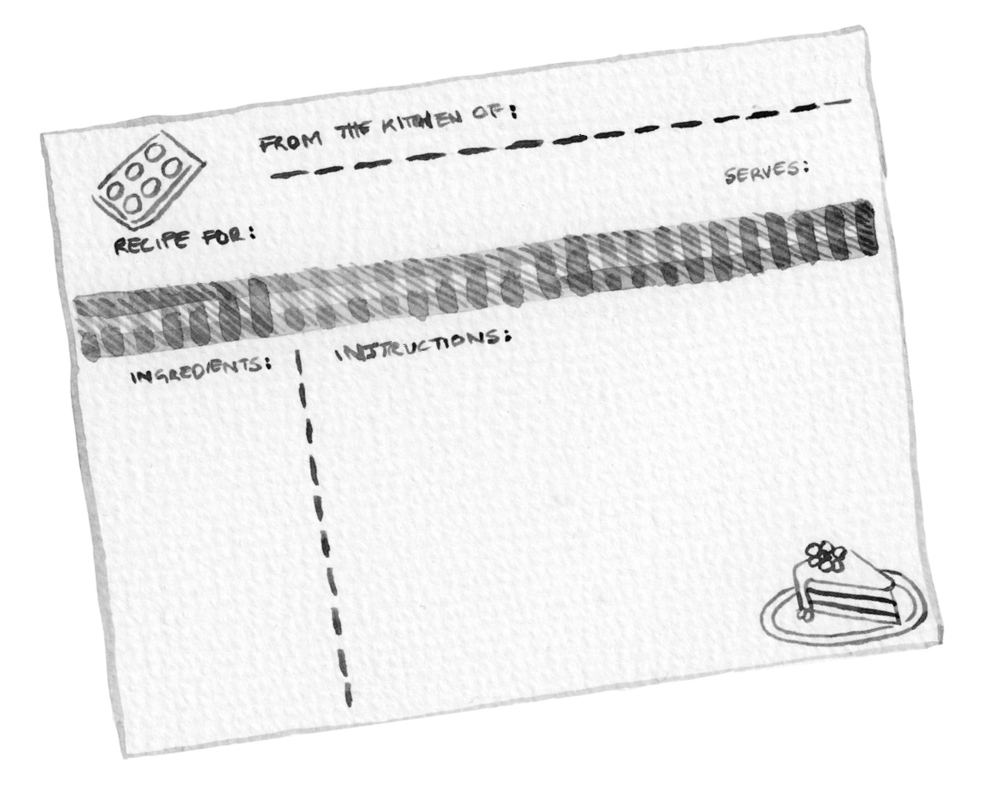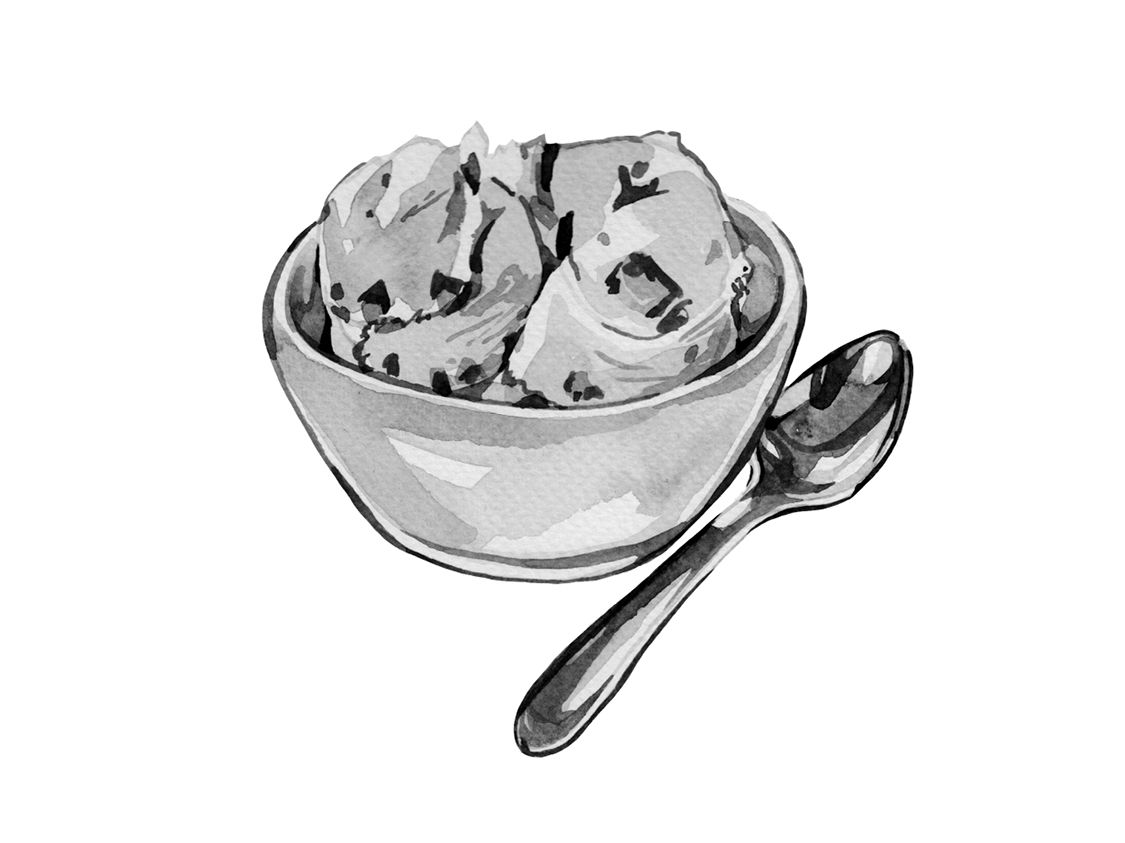Contents
Part One
Introduction to Frozen Vegan Desserts
Ice cream is an indulgent treat that everyone looks forward to on a hot day. Ice creams are made with a base that includes milk, cream, and sugar, ingredients that give ice cream its rich flavor and distinctly creamy texture. Since milk and cream are the two main ingredients in traditional ice cream, making ice cream without them can seem like a challenge, but dairy-free ice creams are easier to make than you might think, and they can be just as satisfying.
This is a collection of entirely dairy- and egg-free vegan ice cream recipes that are made with ingredients that you probably already have in your kitchen. From ice creams made with soy milk to sweet granitas that are bursting with real fruit, there is something for every taste and every occasion as long as youre in the mood for a cool, sweet snack. Youll also find recipes for dairy-free whipped cream, sundae toppings, and a handful of cookies that you can use to make custom vegan ice cream sandwiches with your homemade ice cream.
Nondairy Ice Cream
The main differences between regular dairy ice creams and these dairy-free, or vegan, recipes is that these recipes contain neither dairy nor eggs. It sounds obvious, but creating a vegan ice cream isnt quite as simple as just swapping out one ingredient for another. The dairy used in ice cream typically has a very high fat content, which creates an ice cream with a smooth texture and a minimal amount of ice crystals. Eggs are not included in all traditional ice cream recipes, but when they are, their purpose is to thicken the ice cream base. A thicker base also tends to produce a creamier finished product, though the richness of eggs can actually mask some of the flavorings that are added to ice creams, and some find that eggless ice cream recipes both dairy and nondairy have a brighter, cleaner flavor to them.
Nondairy milks typically have a significantly lower fat content than full-fat milk and heavy cream. A lower fat content means that they contain more water, so your ice cream is more likely to contain ice crystals that keep it from freezing as smoothly as traditional ice creams. This can be avoided by choosing high-fat nondairy milks, such as coconut milk, or by cooking your ice cream base and adding thickeners, such as cornstarch. Like fat, the added starch helps to discourage ice crystals from forming in the finished product and yields a creamier finished product. You dont want to overuse thickeners because they can cloud the flavor of your ice cream and give it a slightly gummy texture. A small amount is usually all you need.
Although there are nondairy creamers and other products that are higher in fat than some nondairy milks, I prefer not to use them. They often have added sweeteners and other ingredients that can make them difficult to work with and can yield inconsistent results. Some products are very specialized and difficult to find. To ensure that everyone can make these ice creams as easily as possible, I tried to stick with readily available ingredients that anyone can pick up at the local grocery store.
Ingredients
Soy milk is a beverage made from soybeans. Its a staple in many Asian cuisines, and it is the first thing that comes to mind for most consumers when they think of a nondairy milk. Soy milk is made by soaking dried soybeans with water, grinding up the mixture, and straining it repeatedly to remove all the bean solids. Most soy milk has about the same fat content as low-fat milk, though nonfat versions of soy milk are available. It is available in plain and flavored versions, the most popular of which is vanilla. Vanilla soy milk is lightly sweetened and has a distinct vanilla flavor that is good for covering up the slightly earthy taste of soy that is inherent in soy milk.
Vanilla is my favorite soy milk to use when making ice creams. Although different brands vary in the amount of vanilla they use in their recipes, most vanilla soy milks are similar and behave similarly in an ice cream recipe. The vanilla masks the flavor of the soy nicely, and it works well with every other flavor you might want to add to it. When using soy milk, I typically add some thickeners to my ice cream base to keep it creamy, since soy milk is mostly water and likes to form ice crystals when it is stored in the freezer.
Almond milk is a beverage made from almonds that is very similar to soy milk. It is made by soaking raw almonds with water, grinding up the mixture, and straining it repeatedly to remove all the nut solids. The finished almond milk is creamy and has a slightly sweet, nutty flavor to it. Like soy milk, it is available in plain and flavored versions and is also typically very low in fat.
Almond milk has a good flavor, especially vanilla almond milk, but it tends to make ice creams with a little less body than some other nondairy milks. It is still a very good choice for nondairy ice cream bases, as long as it is used in conjunction with thickeners to ensure a smooth and satisfying finished product.
Coconut milk is the richest nondairy milk that you can buy and has the highest fat content. This high fat content means that coconut milk will produce an ice cream that is very creamy and will have a consistency similar to that of regular ice cream. Coconut milk has a noticeable coconut flavor, however, which can be very difficult to conceal even when you add other flavorings to the ice cream base. As a result, coconut milk might not be the right ingredient to work with if you are not a fan of coconut-flavored food. If you do enjoy a hint of coconut, however, coconut milk is wonderful to work with. I prefer to use it in recipes where I can enhance the existing coconut flavor and make it stand out a little bit more.
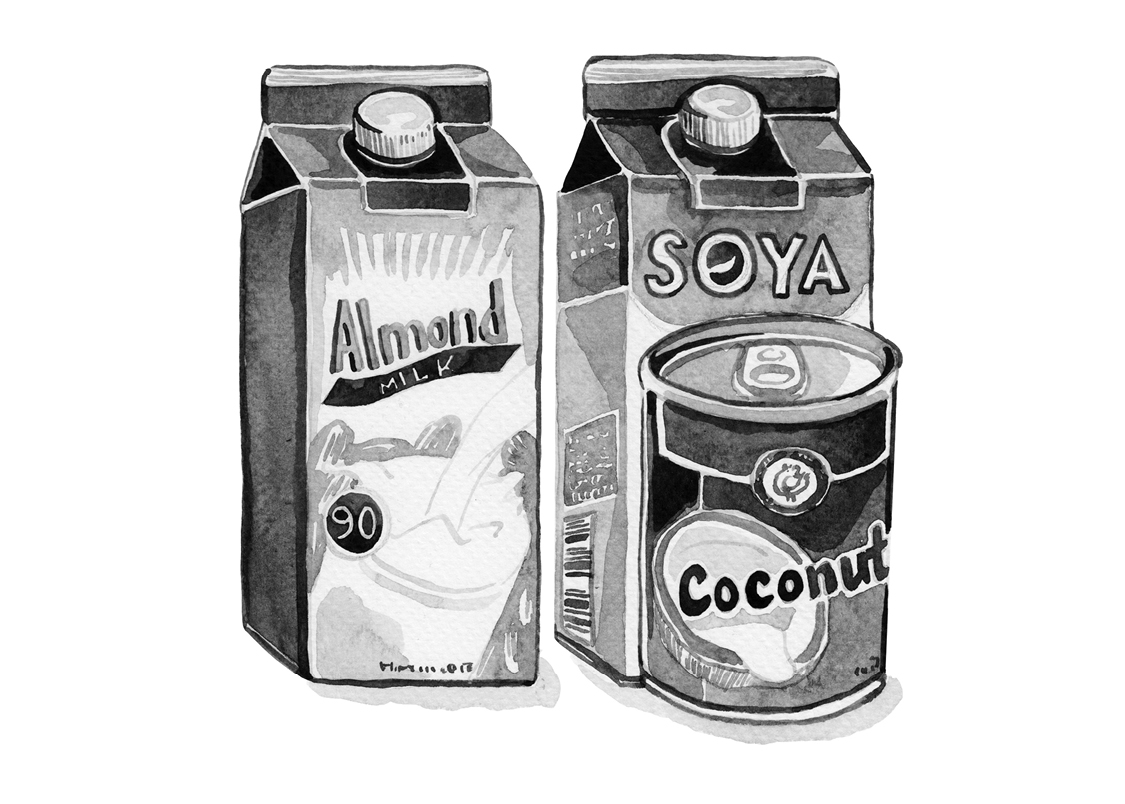
Several types of coconut milk products are on the market. Both full-fat and low-fat coconut milk are usually packaged in cans. They should be shaken before using to minimize separation. Full-fat coconut milk will produce the creamiest ice cream, but low-fat milk can also be used. Coconut cream is an even richer version of coconut milk that is produced by straining most of the water out of coconut milk, creating a very thick cream. Coconut cream is more difficult to find in stores than coconut milk, though it can be used in ice creams to add a richer, softer texture. Coconut cream should not be confused with cream of coconut, which is a presweetened coconut product that is primarily used for making tropical drinks, such as pia coladas, and not for cooking.
Other nondairy milks include hemp milk and rice milk, and they are produced in similar ways to soy milk. These milks tend to be slightly less widely available than soy milks, and while they do have their fans, they are not the best choices for ice cream. Hemp milk can vary in flavor quite a lot from brand to brand, and some can have bitter notes that you probably dont want to include in your ice cream. Rice milk tends to be much more watery than other nondairy milks and doesnt make for a finished product that is quite as smooth.

